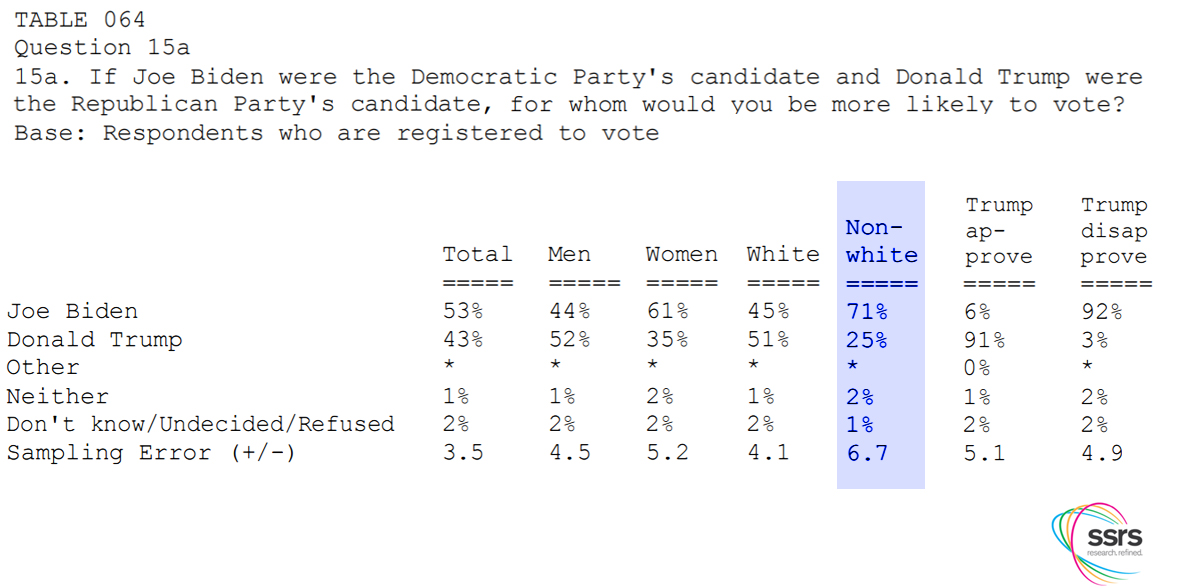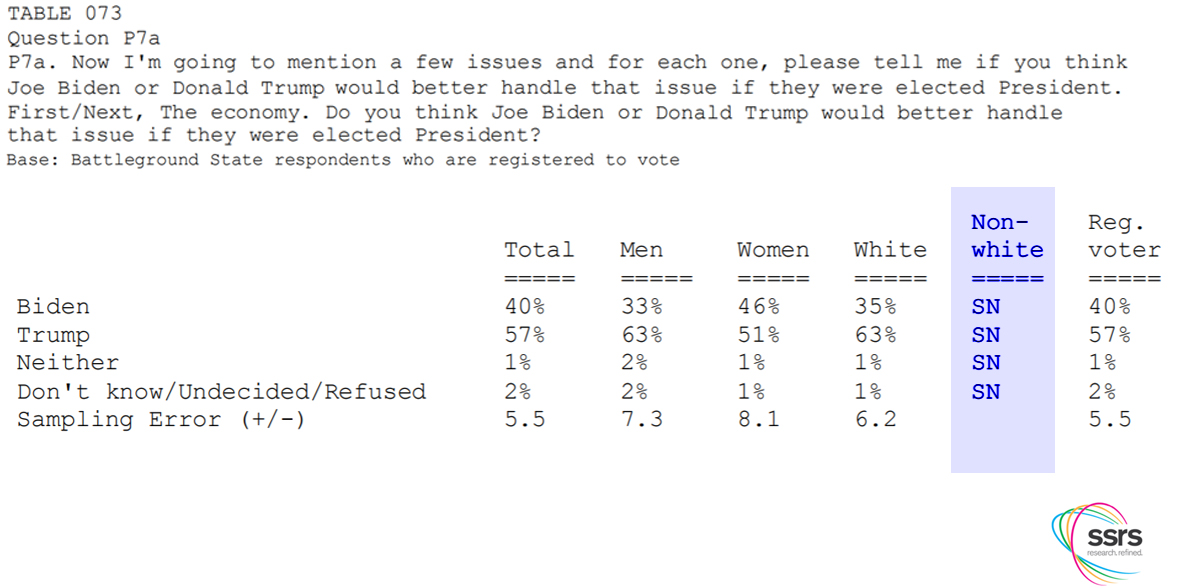CNN Didn’t Sample Enough Non-White Voters in Battleground Poll to Report Non-White Support

Mario Tama/Getty Images
CNN is reporting on a new poll that shows President Donald Trump leading former Vice President Joe Biden in 15 “battleground” states, but something is missing from that poll that was included in their last one: the support of non-white voters.
The latest CNN/SSRS poll shows Trump leading Biden by 7 points among a sample of voters from 15 battleground states: Arizona, Colorado, Florida, Georgia, Maine, Michigan, Minnesota, Nevada, New Hampshire, New Mexico, North Carolina, Ohio, Pennsylvania, Virginia, and Wisconsin.
You could dispute the usefulness of such a poll, since Biden could conceivably hold leads in most of those states and still trail in the average, and that average lead itself is barely more than the sample’s margin of error of +/- 5.3 percent. Indeed, Biden holds leads in 5 out of the 6 battleground states being tracked in the RealClearPolitics averages, and only trails Trump by 0.3 percent in North Carolina. In the most recent North Carolina poll, Biden leads by five points.
And as Biden himself pointed out this week, he holds a nine-point lead in a recent poll of so-called “Senate battleground” states where Republicans hold Senate seats.
But for whatever it is worth, this latest battleground poll represents a stark turnaround from the last time CNN polled a sample from these same states.
In March, Biden led that poll by six points, 51 percent to 45 percent.
That included a whopping 38-point advantage for Biden among non-white voters, 67 percent to Trump’s 29 percent, which more than cancelled out Trump’s 51-47 advantage with white voters in the sample.

But in the just-released battleground sample, white voters swung massively to Trump, 63 percent to 35 percent for Biden. How did Trump and Biden do with non-white voters? CNN can’t tell you. That column is simply marked “SN.”

The poll’s methodology explains that “Results for subgroups with fewer than n=125 unweighted cases are not displayed and instead are denoted with “SN” because samples of that size carry larger margins of sampling error and can be too small to be projectable with confidence to their true values in the population.”
So they polled enough non-white voters in March to report the results, but not in May.
There were, however, enough non-white respondents to report on favorability, and Biden scored a 63 percent favorable to 26 percent unfavorable with non-white voters, a double-digit improvement since May. The favorability numbers also show a huge shift away from Biden by white voters, from a minus 4 net favorability in March to minus 21 net favorability in May.
It’s never a good idea to ignore polls, and the negative movement in this one isn’t nothing. But it’s safe to say that the data suggests that as CNN increased its margin of error in this poll, it also increased its error. And failing to measure non-white support for Biden is a serious problem, especially when you consider the potential for game-changing turnout among that group.
But it does make for an attention-getting headline.




